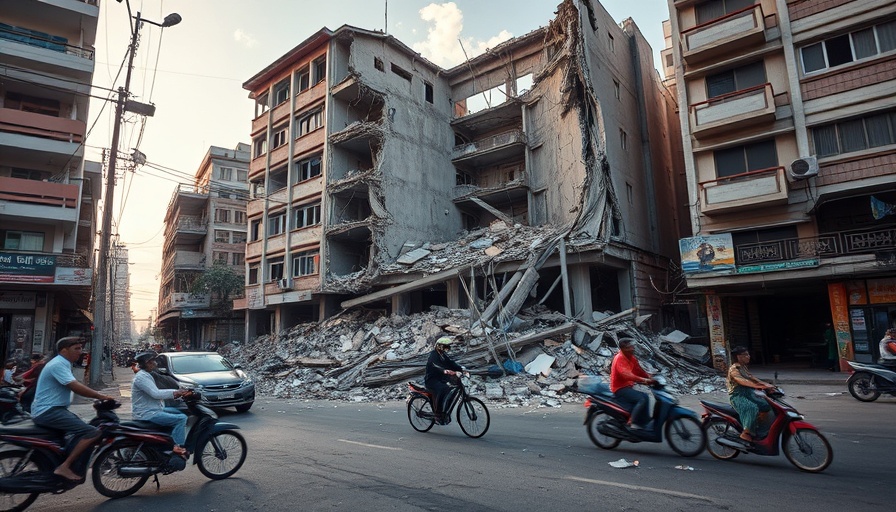
The Humanitarian Crisis in Myanmar: Earthquake Aftermath
In the wake of a devastating earthquake that struck central Myanmar on March 28, 2025, the urgent need for humanitarian aid has grown exponentially. As reported by the World Health Organization, over 3,000 people have been confirmed dead, and more than 4,700 are injured, leading to overwhelmed hospitals struggling to provide essential care amid significant shortages of medical supplies, including blood for transfusions. The disaster has raised intense concerns about food security, water access, and the overall humanitarian crisis in a country already fractured by conflict.
Understanding the Ground Reality
Relief efforts have been severely hampered due to an information blackout implemented by Myanmar's military junta, which seized power in February 2021. In a stark move, the junta has restricted foreign media from reporting from within the disaster-affected areas. Local media also faces significant obstacles, making it arduous to gauge the full impact and scale of the destruction, limiting independent verification of the crisis's extent.
Communication Blackouts: A Major Barrier to Relief
With communications largely cut off, international aid organizations face monumental challenges in mobilizing support. According to reports by humanitarian groups, the situation is exacerbated by ongoing violence and bureaucratic hurdles that prevent timely deliveries of aid. Estimations point out that around 20 million people were in need of humanitarian assistance even before the earthquake struck.
While some rebel groups have declared temporary ceasefires to facilitate relief operations, the military regime's lack of cooperation has added layers of complexity to the response efforts, limiting access to communities in desperate need of aid.
Heavy Toll on Infrastructure and Communities
The quake's epicenter in the Sagaing region near Mandalay has inflicted severe damage not only to residential buildings but also to critical infrastructure. Roads and bridges have been reduced to rubble, with many areas rendered inaccessible—all while electricity outages further complicate rescue operations. "The devastation is alarming," says Melissa Hein, head of communications for the World Food Programme in Myanmar, highlighting the dire state of affected areas.
Need for a Coordinated Response
As conditions continue to deteriorate, the ability to scale up humanitarian operations hinges significantly on overcoming these access barriers. NGOs stress the importance of a coordinated response that leverages the resources of both local and international organizations, allowing for the efficient distribution of aid to the affected populations.
Lessons for Sustainable Humanitarian Practices
In light of this ongoing crisis, we must also consider the environmental impact of humanitarian work in regions affected by disasters like earthquakes. This includes implementing sustainable practices in all aspects of relief efforts—from using eco-friendly materials for temporary housing to ensuring that any aid provided does not exacerbate local pollution or resource depletion.
Organizations can adopt a holistic approach that not only addresses immediate needs but also promotes sustainable development goals aimed at rebuilding communities stronger and more resilient against future disasters. Efforts such as promoting renewable energy systems in reconstruction processes can help communities transition towards more sustainable living practices.
What’s Next for Myanmar?
As the international community watches closely, the situation in Myanmar remains precarious. The continuing absence of timely aid and clear communication contributes to feelings of desperation among the affected populations. To support community resilience, global actors must prioritize the establishment of an emergency response framework that embraces ethical practices while addressing immediate humanitarian needs.
In summary, the earthquake in Myanmar not only exposes deep-rooted vulnerabilities but also presents an opportunity to rethink how humanitarian efforts can align with sustainability, fostering a climate of hope in the face of adversity. As we shift towards greener, more ethical responses, we must uphold the dignity and rights of all affected individuals while fostering a collective path toward recovery.
 Add Row
Add Row  Add
Add 



Write A Comment